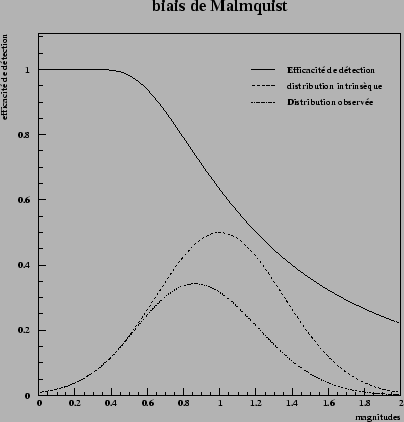 |
The observations of the objects which one wants to estimate the distance are limited by the sensitivity of the instruments. The weaker one object is, plus its probability of being detected is weak. One can thus for observations given to build the operating characteristic of detection according to flux or magnitude of the objects.
If it is considered that the objects that one tries to detect have a dispersion in intrinsic luminosity given, then in extreme cases of detection, one will select the most luminous objects preferentially. Figure 2.7 shows that for an effectiveness of detection given according to the magnitude, the average magnitudes of the detected objects is smaller than the average for the objects present in this range of flux.
 |
The comprehension and the correction of this bias thus require to know in a precise way the effectiveness of detection of the studied objects and to be able to consider their distribution intrinsic in luminosity.